What's New
Displaying results 1131 - 1140 of 4052
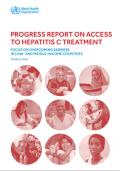
Resource | Publications,
This report updates the first edition, published in 2016, and reviews the progress countries have made in expanding access to life-saving DAAs. The report reviews the main challenges countries face and describes recent developments in relation to five key factors that determine access to DAA medicines: affordability, quality assurance, regulatory approval, government commitment and financing. It highlights key areas for action by ministries of health and other government decision-makers, pharmaceutical manufacturers and technical partners.
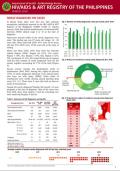
Resource | Fact Sheets,
In March 2018, there were 912 new HIV antibody seropositive individuals reported to the HIV/AIDS and ART Registry of the Philippines (HARP) [Table 1]. Sixteen percent (148) had clinical manifestations of advanced HIV infection (WHO clinical stage 3 or 4) at the time of diagnosis.
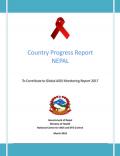
Resource | Publications,
At the 2011 United Nations General Assembly High-Level Meeting on AIDS that took place in June in New York, Member States adopted a new Political Declaration which contained new targets to effectively respond to the AIDS epidemic. The 2011 Political Declaration mandates UNAIDS to support countries in reporting back on progress made towards achieving the new commitments. It also provides for the UN Secretary-General to report regularly to the General Assembly on progress achieved in realizing these commitments.
Nepal’s HIV epidemic remains concentrated among key populations, with HIV prevalence at 5% among MSM and 8.5% among TG people in certain parts of the country; 8.8% among males who inject drugs and 8.8% among women who inject as well; 2.2% among FSW; and 0.4% among MLM. The majority of new infections are occurring among ‘low risk’ women infected by from their spouses, male labour migrants and MSM.
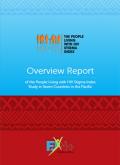
Resource | Publications,
This report highlights the findings from a seven country study of stigma and discrimination in the Pacific region funded by the Global Fund through the UNDP Pacific Office in Fiji. The report will also give recommendations for how stigma and discrimination can be reduced and ultimately eliminated in the region in line with UNAIDS’ global treatment targets such as 90-90-90.
By 2020, 90% of all people living with HIV will know their HIV status. By 2020, 90% of all people with diagnosed HIV infection will receive sustained antiretroviral therapy. By 2020, 90% of all people receiving antiretroviral therapy will have viral suppression.

Resource | Publications,
Cambodia has set a goal to eliminate MTCT of HIV by 2025. Of the five process indicators by WHO to be elimination-certified, the first indicator of ≥95% ANC coverage, has already been achieved. Substantial progress has also been made towards the other four indicators. However, the data systems to validate elimination are not yet fully in place, systems have not yet been developed to ensure delivery of PMTCT services for women who receive ANC and maternity care in both public and private sector, laboratory systems need further strengthening, and human rights, gender equality and community engagement considerations have not yet been fully assessed. For these reasons, a pre-elimination strategy is needed from 2017-2020, prior to the full elimination strategy.
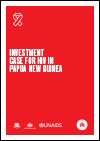
Resource | Publications,
This Investment case for HIV in PNG shows that because of the hard work and considerable investments of the Papua New Guinea (PNG) Government, its international partners, church groups, civil society and people living with HIV, the HIV epidemic has been checked with prevalence at a little under 1 percent of the total population. With estimates in 2000 predicting an HIV epidemic at five times that level, it is clear that investments in HIV work but the job is far from complete. The Investment case for HIV in PNG (“the Investment Case”) also shows that we cannot be complacent: among the general population in the National Capital District, HIV prevalence is 1.6 percent and it is above 1 percent throughout the highlands, where the bulk of the population lives. In some key populations, prevalence is much higher: around 15% of sex workers and 9% of men who have sex with men are living with HIV, and new infections are increasing in both groups. PNG also has the highest STI rates in the region.
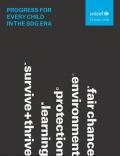
Resource | Publications,
Two years since world leaders committed to achieving the SDGs, are we on track to achieve the goals for children? Do we even have enough information to know? The report “Progress for Every Child in the SDG Era” assesses the world’s performance to date, focusing on 44 indicators that directly concern 2030’s most important constituency: children.

Resource | Publications,
This summary of the UNICEF Strategic Plan, 2018–2021 highlights the organization’s key goals and activities, setting out the concrete results that UNICEF aims to achieve for children with its partners over a four-year period. The summary also outlines the organizational change strategies and enablers envisioned by the Strategic Plan to achieve those results, charting a course towards the attainment of the 2030 Sustainable Development Goals and a better future for every child.
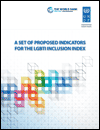
Resource | Publications,
This publication provides a set of 51 indicators in the areas of health, education, civil and political participation, economic empowerment, security and violence. UNDP, in partnership with the World Bank and key civil society partners undertook comprehensive consultations to develop and validate these indicators.
The indicators are in line with the SDG global indicator framework and supported by explanatory notes, as well as references to potential data sources.
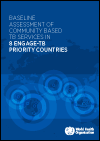
Resource | Publications,
This document contains a series of desk reviews for the eight ENGAGE-TB priority countries supported by the Global Fund (DRC, Kenya, Indonesia, Mozambique, Myanmar, Nigeria, Pakistan and Tanzania). The document provides a situation assessment and gap analysis about the state of community based TB activities in these countries. The focus on these eight countries was justified by the high prevalence of TB and the very high number of missed/unreported cases. To develop the profiles, Global Fund applications, national TB strategic plans and reports, programme review reports, relevant national guidelines and websites of the community stakeholders were examined.





